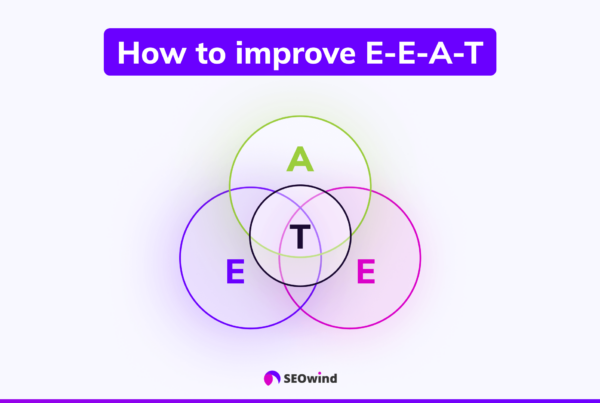In the modern, digital-first marketplace, engaging customers and building efficient relationships are the key to business success. One lesser-known yet equally powerful marketing strategy that can help achieve this goal is “grassroots marketing.” This approach relies on a ground-up method, directly engaging with a smaller, more defined group before eventually reaching a larger audience. Read on as we delve deeper into what the grassroots approach to marketing entails and how it can be effectively used to get more customers.
What is Grassroots Marketing?

Grassroots marketing is a strategy where businesses rely on direct communication with their targeted demographic instead of broadcasting their message to a vast majority. The primary aim behind this tactic is to tap into niche audiences who are likely to share the company’s values and feel passionate about its offerings.
This form of marketing often employs unconventional means like events or social media campaigns instead of traditional advertising avenues such as billboards or print ads. A well-crafted grassroots strategy fosters a sense of community around your brand, leading consumers not just to buy from you but become active advocates for your products or services.
Remember, though, that grassroots campaigns may require a longer time frame to realize measurable results than conventional marketing channels due to their personalized nature. Yet when done correctly, its potential to nurture loyal customers and deliver a substantial return on investment shouldn’t be underestimated.
Benefits of Grassroots Marketing

Through its unique approach to engaging with prospective customers, Grassroots marketing offers several unique benefits.
Cost-Efficient
One main benefit of a grassroots marketing strategy is that it is cost-efficient. The strategic targeting of smaller, more specific groups rather than a broad audience reduces extraneous expenses related to mass advertising or large-scale promotions. By focusing your efforts only on those who logically have an interest in what you’re selling, you can ensure every dollar contributes directly towards obtaining potential leads and conversions.
Improves Customer Interactions
Grassroots marketing also shines at improving customer interactions. Its focus on personal communication often entails direct customer engagement through community events, social media, or local initiatives. This facet enhances the likelihood of a positive customer experience, which consequently builds a favorable image for your brand.
Increases Customer Retention
Another advantage lies in its ability to increase customer retention levels. When customers feel valued and connected to a brand – sentiments that grassroots campaigns often foster – they will likely remain loyal. Maintaining an existing customer base is crucial as repeat customers spend more than the cost involved in acquiring new ones.
Improves Understanding of the Audience
Understanding your audience is a crucial part of any successful business strategy. Grassroots marketing aids in deciphering consumer preferences and behavior patterns through real-time interactions and feedback. Over time, these insights can be leveraged to enhance your offerings and craft personalized experiences for your clientele.
Strengthens Small Campaigns
Lastly, if small businesses initially seek ways to gain momentum with little investment, grassroots marketing could be just the trick. Smaller runs or test campaigns conducted in tuned-down geographical areas provide valuable lessons from grassroots strategies, ultimately strengthening their market presence over time.
Data on successful grassroots marketing campaigns

An impressive figure comes from the Event Marketing Institute’s research, which pinpoints that 70% of consumers become regular customers after experiencing grassroots events (EventTrack, 2015). These grassroots strategies have strong conversion potential.
The importance of peer-to-peer influence can’t be overstated either. According to Nielsen’s Global Trust in Advertising report, approximately 92% of consumers trust organic, user-generated content more than traditional advertising. A significant advantage of grassroots marketing is leveraging community relationships to share authentic experiences and insights about a brand.
A Marketwired survey found that the majority (73%) of companies invest over half their marketing budget in social media channels targeting users who amplify their messages – akin to grassroots principles. Firms increasingly realize the benefits of empowering their audiences to advocate for them.
Expanding on this, around 76% of marketers agreed in an Adobe survey that measuring customer engagement was vital in assessing campaign success. This aligns perfectly with key metrics tracked by grassroots campaigns, such as community participation levels or shared experiences.
Gazing at these figures accentuates the relevance and effectiveness of this approach within today’s wild landscape brimming with ad clutter and fleeting attention spans.
In light of these revealing statistics about grassroots marketing, businesses should recognize its inherent value—regardless if you’re leading a startup looking for cost-effective solutions or managing established brands aiming for a heightened level of customer interaction and retention.
Grassroots Marketing vs Guerrilla Marketing
You might encounter terms like grassroots and guerrilla marketing as you delve deeper into unconventional marketing strategies. You may wonder if they’re interchangeable or distinctly different approaches.
What is Guerilla Marketing?
Guerrilla marketing eliminates traditional concepts, instead encouraging creativity and out-of-the-box thinking to achieve business goals. Described as unexpected, innovative, and sometimes even rebellious, this form of marketing creates a memorable brand experience by focusing on disruption and surprise tactics in public places.
Similarities Between the Two Strategies
Here are some parallels between guerrilla and grassroots strategy:
- Both employ non-traditional approaches to reach consumers with unique experiences.
- They target reducing costs while maximizing results.
- Both rely on word-of-mouth.
- Each encourages creativity to make a statement or leave a lasting impression.
In short, both strategies move beyond mere observable advertisement- they invite potential customers to interact with the brand personally directly.
Key Differences
Even though some tenants overlap, definite contrasts are setting apart these two methods:
- Target Audience: Grassroots campaigns aim their efforts toward a smaller, more defined group of people, whereas guerilla marketing campaigns seek larger exposure through mass audiences.
- Execution: In contrast to the highly localized efforts predominantly seen in grassroots strategies, guerrilla marketing often occurs wherever large groups gather – big cities, festivals, or trade shows.
- Intent: While both seek to generate buzz or publicity about a product or service, grassroots branding strives for deeper consumer relationships through personal interactions rather than sudden surprises. Guerillas tend to treat individuals more passively due to their wider scope of operation.
Whether your choice leans towards grassroots campaign implementation or edgy guerilla tactics largely depends on your mission statement and a thorough grasp of your target market’s preferences.
Tips for Starting a Grassroots Strategy

As you embark on your journey to leverage grassroots marketing, it’s critical to consider certain considerations. Here are some invaluable tips that might give your grassroots efforts just the edge they need:
Understand Your Brand
Grassroots marketing is about sparking deeper, more meaningful connections with your audience. This means the first step in establishing an effective grassroots campaign is gaining clarity on your brand narrative and values.
Identify a Specific Niche First
Your first step should be identifying a highly niche audience you want to reach with your grassroots campaign. By precisely understanding their interests and needs, you can tailor your messages and strategies smartly.
Determine Goals for Your Grassroot Marketing Campaigns
Every successful venture starts with defined objectives. What precisely are you looking to achieve with your grassroots marketing initiative? Is it customer acquisition or increased community engagement? Clearly defining what success looks like will give you some metric against which you can measure progress toward that goal.
Create Memorable Content
Now comes the exciting part – creation! Whether it’s attention-grabbing posts for social media accounts or influential blogs, time-lapse videos on YouTube, or quirky ambient ads – ensure each piece of content tells an engaging story aligned with your brand ethos and consumer interests.
Promote The Campaign
Once the marketing plan is ready and content created, utilize every platform available (both online and offline) to cross-promote your campaign messages. This web of interconnected exposure could drive higher traffic volumes than any conventional marketing strategy ever could.
Get Creative and Inspire Action
Creativity is the key to capturing attention in such an increasingly saturated marketplace. Ensure your grassroots strategy is balanced; make it dynamic and interactive! Drive engagement by inspiring action from your target audience.
Focus on Storytelling
Storytelling is a powerful tool for engaging one’s audience emotionally. Instead of hammering them with sales pitches, pivot towards sharing related experiences or anecdotes that resonate with your customer base.
Start Hyperlocal
Grassroots marketing starts at home, literally. Being close-knit within local communities amplifies visibility, creates meaningful relationships, and provides firsthand experience about customers’ behavior trends which helps plan better grassroots events or campaigns later.
Use Multiple Approaches
Contrary to what many believe, there’s no one-size-fits-all approach to grassroots strategy. Experimentation is critical—utilize different content types (blog posts, videos), varied outreach methods (social media ads, influencer partnerships), etc., till you find out what works best for specific audience.
Host Events
Events coalesce people in shared experiences, creating a powerful way of organically spreading awareness about your brand. These local events can become powerful drivers of positive word-of-mouth reviews with thoughtful planning.
Capitalize Upon Trending Topics
Being conversant and reactive towards trending topics relevant to your business or industry drives conversation around it, providing greater brand visibility through this deliberate association, effectively enhancing the overall impact of any grassroots event designed around those contexts.
Get Creative with Ambient Ads
Unconventional tactics like ambient advertising – placing advertisements strategically in unexpected locations – can create splendid opportunities for reaching out to wider demographics due to its innate novelty factor inducing larger organic sharing potential or even going viral!
Be Controversial on Social Media
Strategically courting controversy on social platforms may draw more eyeballs toward you. However, it entails careful deliberation as wrong steps could have longer-term reputational risks outweighing short-term gains.
Support a Good Cause
People value brands that stand up for something beyond profits. Associating yourself with a good cause generates positivity around the brand, often leading to increased loyalty among existing consumers while attracting newer ones and simultaneously promoting the cause itself!
Never Underestimate the Power of A Handwritten Card
In our hyper-digital age, sincere personalized gestures go a long way in fostering deeper connections with customers and making them feel valued-encouraging trust and loyalty, illustrating impactful grassroots marketing principles in action.
Remember: Creators who understand how grassroots marketing operates strategically strike a balance between outgoing promotional endeavors and facilitating valuable inbound engagements hugely determine the success probability of such intimate connections via these strategic practices-effectively wielding influence within their core market sphere!
How to Optimize a Grassroots Marketing Campaign

Now that we’ve dived into the core characteristics of grassroots marketing campaigns let’s focus on enhancing these campaigns for maximum reach and effectiveness. Here, I’ll explore three key strategies: creating webpages, making pages mobile-friendly, and incorporating other SEO tactics.
Creating Webpages
The initial step of optimizing your grassroots marketing campaign involves creating custom, compelling web pages. Generating dedicated landing pages that speak directly to specific segments within your target audience is critical.
To strike the right chord with each demographic slice:
- Craft tailored messaging using language and images that resonate.
- Include a clear call-to-action (CTA) pushing for customer engagement or conversion.
- Integrate social proof like testimonials or endorsements, boosting credibility and assurance within potential customers.
Always remember, consumers visiting a bespoke webpage should feel seen – as if you’re speaking directly to them.
Making Pages Mobile Friendly
In our smartphone-dominated society, failing to optimize websites for mobile browsing is synonymous with leaving money on the table. According to Sweor’s statistics, 57% of all U.S. online traffic now comes from smartphones and tablets.
Hence the second sustenance in refining your grassroots event strategy is ensuring a seamless mobile experience. This includes:
- Reducing load time by compressing images and using mobile-friendly themes.
- Assuring easy navigation by employing simple layouts.
- Checking text readability and tappable element sizes.
Not only will this increase site accessibility across devices, but it can boost your ranking in search engine results – an essential aspect when considering our next point on SEO tactics.
Incorporating Other SEO Tactics
Search Engine Optimization (SEO) is key in getting your grassroots social media campaigns ‘found.’ Integrating other proven SEO techniques into your content strategy dramatically improves website visibility.
Here are some best practices considered crucial today:
- Build backlinks: collaborate with industry blogs or influencers who would reference or link back to your website.
- Content relevance: create quality content resonating with users’ needs and select relevant keywords.
- Keyword optimization: strategically infuse primary keywords while maintaining a natural flow.
Remember, consistent SEO efforts go hand-in-hand with effective grassroots good campaigns — they help push products/services under digital spotlights where organic discussions thrive most naturally.
Grassroots Marketing Examples

Let’s explore compelling examples of grassroots marketing that made waves in their respective industries.
I’ll guide you through major campaigns by Dove, UNICEF, and others, all of which exemplify the power and potential of grassroots strategy.
Dove Real Beauty Campaign
The Dove Real Beauty campaign is an emblematic example of grassroots marketing revolutionizing brand perception. Launched in 2004, this campaign encouraged women globally to redefine societal beauty standards. It was not merely about promoting Dove products; it was a movement addressing body image issues, directly involving its customers, thereby embodying the essence of grassroots marketing.
- Engaging With The Audience – Instead of adhering to mainstream depictions of beauty, Dove chose real women with various shapes, sizes & ethnicities for their ads.
- Involvement And Participation: The “Real Beauty Sketches” initiative invited participants for portrait sessions. The disparity between self-perception & outward perspective showcased contributed to highlighting beauty from within.
- Impactful Messaging: Heroic tales showcased grabbed attention and stirred emotions among viewers creating impactful resonances.
This refreshing approach caused seismic shifts within the industry. It bolstered brand awareness dramatically while sculpting a positive new-age brand persona.
UNICEF: Likes Don’t Save Lives
UNICEF presented a remarkable case study on leveraging social media for successful grassroots event execution with their “Likes Don’t Save Lives” campaign. Their insightful messaging turned heads, raising vital questions about armchair activism.
- Social Media as Prime Medium – They focused primarily on exposing the limited impact trendy social media actions like ‘liking’ or ‘sharing’ had on substantial change for children in need.
- Provocative Messaging: Their adverts bluntly stated: “Like us on Facebook, and we will vaccinate zero children against Polio.” Such striking messages pushed audiences to contribute beyond mere clicks.
- Prompting Actionable Responses: The call to action was clear — substantial donations saved lives, starting many followers to reconsider their role in effectuating humanitarian change.
Through its thought-provoking campaign, UNICEF not only raised substantial funds but also managed to instigate real-world action over passive online solidarity — a testament yet again to the tenets of effective physical engagement explored through good grassroots strategy held up against digital likes!
<iframe width=”560″ height=”315″ src=”https://www.youtube.com/embed/RwZEjiSHOqc” title=”YouTube video player” frameborder=”0″ allow=”accelerometer; autoplay; clipboard-write; encrypted-media; gyroscope; picture-in-picture; web-share” allowfullscreen></iframe>
The ALS Ice Bucket Challenge
One shining example would be The ALS Ice Bucket Challenge. Born out of nowhere in the summer of 2014, it rapidly caught on as people began dousing themselves with buckets of ice water and challenging others to do the same. This simple but brilliant strategy raised awareness about ALS disease and more than $115 million for research [ALS Association].
Source: National Geographic
Dropbox Referral Program
Next is Dropbox, which employed one such grassroots marketing tactic. Instead of spending copious amounts on advertising, they set up a referral program – offering free additional storage space to users who got their friends on board. The result was a whopping 60% increase in sign-ups, turning Dropbox into a multi-billion dollar company [Forbes Industry Analyzer].
In essence, though each campaign had differing goals – ranging from charitable fundraisers to consumer-focused promotions- what unites these cases is their embodying the principles essential to grassroots marketing success; engaging with audience members directly and utilizing emotional triggers effectively. Each showcased an understanding that consumers are no longer passive acceptors of branded messages but engaged collaborators given enough motivation and cause for caring. These stories underscore how agile, innovative, and impactful grassroots marketing can be when executed correctly. They prove beyond doubt that you don’t need splashy advertisements or big-budget productions for your brand message to resonate powerfully among audiences.
Text Messaging Strategies for Grassroots Marketing Campaigns
Grassroots marketing techniques are renowned for their creativity and innovation, best exemplified when referencing text messaging strategies. It goes beyond mere text exchanges; it notably infuses several components such as visuals, calls to action, support for a cause, and the usage of influencers. Let’s delve further.
Include Visuals
In integrating visuals into your grassroots campaign strategy via text messages, always remember that images can captivate attention faster than words alone. Images are more engaging ways to convey information or an overarching narrative about your brand. Pictures of products, company events, or promotional offers are part of the visual repertoire you can use here. Additionally, they help break up blocks of text and make reading easier on the eyes.
Include a Call to Action
The essence of every grassroots marketing campaign message lies in its intended action – what do you want your recipients to do? Therefore incorporating clear calls-to-action (CTAs) in your text message is essential for achieving campaign objectives like getting potential customers to visit a website, sign up for a newsletter, or purchase a product. Be explicit with instructions: ‘Click here,’ ‘Buy now,’ and ‘Sign up’; these precise words have proven effective in steering readers towards desired responses.
Support a Cause
Grassroots campaigns based on fighting for a cause stimulate emotions that drive consumers’ decisions. Thus using various marketing messages geared towards social causes enhances the authenticity of your brand while setting it apart from competitors who focus solely on selling their product/service offerings. Whether fighting climate change or supporting local communities – whatever the cause – once genuine and relatable, people will find engaging easy.
Combine your efforts with Influencers
Incorporating influencers could amplify the reach of any grassroots marketing effort by bringing messages to new audiences quickly. Particularly influential figures relevant to your target audience should be employed to deliver your campaign texts, ensuring maximum impact. The secret associated with this approach is this: people tend to follow recommendations from personalities they admire confidently compared to brands themselves.
Finally, harnessing diverse strategies across different touchpoints comprises one major key driving successful grassroots marketing efforts—employing innovative mediums like texting forms primary precedence among them all.
YouTube Content Strategies for Grassroots Campaigns
Grassroots marketing often carries the advantage of authenticity, a quality that can transfer exceptionally well to platforms like YouTube. This content-sharing titan allows individuals and brands to connect with audiences more deeply and engagingly. So, how can you align YouTube strategies with your grassroots campaign? Here are some key points:
Craft Compelling Stories
In grassroots strategy, narratives often hold power. A branded video or short film presenting your brand’s story or journey is captivating. It serves as fertile soil to plant the seeds of brand loyalty.
Product Showcases
Providing clear visuals of what your product (or service) can be an effective grassroots marketing technique on YouTube. Instead of telling the audience why they should pick you over competitors, show them.
Encourage User-Generated Content
Harness the power of user-generated content by creating challenges, contests, or hashtags related to your brand. Just ensure that participating feels rewarding and fun for your viewers.
Partner with Influencers
Successful partnerships with influencers who resonate strongly with their audience can amplify your grassroots campaign’s meaning and reach dramatically.
Remember to keep all videos aligned with your overall branding message while focusing on creativity and uniqueness. Using these tactics effectively may transform YouTube from another platform into a potent driver for your grassroots marketing efforts.
Importance of Reviews
The importance of reviews cannot be overstressed as they go a long way in enhancing credibility. In fact, according to a survey by BrightLocal, 84% of people treat online reviews as personal recommendations. While implementing your grassroots marketing plans, pay attention to compelling reviews’ power.
Encouraging Customer Reviews
To leverage positive customer experiences in your grassroots strategy, you should encourage your audience to leave thoughtful feedback about their interactions with your brand or products.
Ensure to make the review process straightforward. Remember that convenience matters — if it’s too complicated or time-consuming to leave a review, most customers might opt out.
Showcasing Positive Reviews
Another effective tactic is showcasing these positive reviews prominently across all touchpoints where potential buyers may contact your product or service. This could be on your website, social media pages, newsletters, or product brochures.
By doing this, you’re subtly using real-life testimonials from satisfied users to effectively drive home your product’s value proposition, making it an ideal principle for a successful grassroots marketing campaign.
Responding to Negative Reviews Constructively
Not all reviews will be glowing endorsements, of course. It’s crucial not only initially to respond proactively and professionally to negative comments but also to take them as constructive criticism: opportunities for improvement rather than attacks on your brand.
Emphasizing transparency and valuing feedback can turn what seems like a threat into an opportunity — one that not only mends relations with disappointed customers but demonstrates to others that you’re committed to making things right when things don’t go as planned is invaluable.
Whether positive or negative – each review gives you an insight into how real users perceive your offering, helping improve upon areas where necessary while strengthening where successful and suitable for better longevity in competitive market spaces.
Hyperlocal Strategies for Grassroots Campaigns
While implementing a grassroots campaign, harnessing the power of hyper-local strategies often yields significant rewards. The hyperlocal strategy focuses on attracting customers from a specific area or region. This technique benefits local businesses aiming to attract more clientele without competing with larger corporations.
A robust hyperlocal approach has certain features that elevate grassroots marketing campaigns. Let me expound upon these facets.
- Understand Your Local Market: Make sure you have an excellent understanding of your local market and demographics. Knowledge about the behavioral pattern of the locals can be a huge differentiator.
- Local SEO Tactics: Use SEO techniques specifically designed for local search results, such as Google My Business listings, and incorporate regional keywords into your content.
- Regional Content Creation: Crafting content tailored toward your locale will prove significantly attractive to consumers residing therein—featuring seasonal events, news items, or customs unique to your location.
- Engage With Local Influencers: Partnering with influencers who hold sway over your target audience in the locality enhances credibility while expanding reach.
- Community Participation: Participate proactively in community events that give you superior visibility and convey your commitment to issues dear to the community.
Capitalizing on mere proximity isn’t enough, though. Nurturing relationships with local consumers assures successful leveraging of hyperlocal strategies within grassroots marketing initiatives.
Grassroots social media platforms can magnify the impact of every other strategy mentioned above through posts that elicit feelings of nostalgia, pride, and belonging amongst the targeted audience.
Remember, at its core, hyperlocal marketing thrives by observing trends specific to neighborhoods rather than taking cues from global patterns or even national trends. It finds irrefutable evidence in several grassroots campaign examples where insightful interpretation of micro-trends enabled brands to capture customers’ attention effectively and sustainably in the face of stiff competition.


